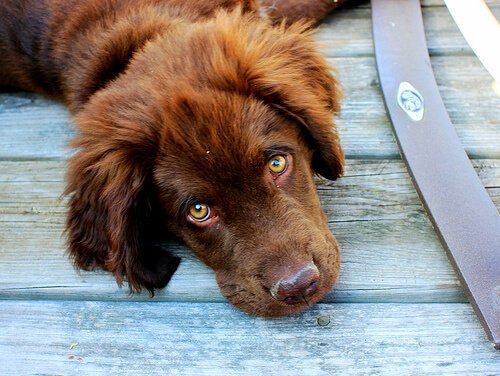Epilepsy in Dogs: What Does It Look Like and How Is It Treated?


Written and verified by the lawyer Francisco María García
Epilepsy in dogs is a physical brain disorder involving seizures. It is not a lethal disease, but knowing how to react during an epileptic seizure can save your dear pet’s life.
The brain is a multi-tasking organ. It’s responsible for interpreting and translating external stimuli to the other cells. Likewise, it is linked to and controls all of the body’s metabolic processes.
Neural Activity
This whole dynamic is largely possible because the brain is composed of neurons. These cells communicate with each other through electrical impulses, carrying perceived stimuli and interpreted information to and fro. This electrical phenomenon is known as synapsis.
When neurons or other cerebral components are touched by some disease or condition, the body’s metabolism is not the only thing that can be negatively affected. Intellectual and/or emotional functions could deteriorate, as well.

Epilepsy is one of the most common health issues that man’s best friend can develop. Knowing the symptoms of epileptic seizures and how to prevent them can greatly improve your dog’s quality of life.
What is Epilepsy in Dogs?
Contrary to what one might think, epilepsy in dogs is not a psychological or mental illness. Animals with this disease do not have any difficulty learning, nor do they have personality deficiencies.
Idiopathic epilepsy is a physical disorder that can attack certain neurons. Its main and only visible symptom is seizures. Epileptic seizures can occur as a byproduct of other diseases, like brain tumors, liver or heart failure, distemper, diabetes, trauma, or poisoning. Here, seizures are an alarming sign that the condition is getting worse.
Underlying Causes of Epilepsy in Dogs
The primary cause is unknown. It has been proved that dog breeds that are genetically more prone to epilepsy are: German Shepherds, Saint Bernards, Beagles, Irish Setters and Poodles.
Studies say that epileptic seizures are due to an excess of electrical activity in certain neurons. These cells become overactive. Extreme excitement can then momentarily affect brain function.
That’s why there is a lack of motor coordination during a seizure. In addition, there may also be involuntary, excessive movements, behavioral alterations, and temporary loss of consciousness.
Signs and Stages of Epileptic Seizures in Dogs
Specialists divide epileptic seizures into three stages:
Stage 1: “Aura”
The initial symptoms of an upcoming epileptic seizure are:
- nervousness
- restlessness
- hyperactivity
- excessive salivation
- tremors
- isolation
This stage can last anywhere from a few seconds to several days. Therefore, it’s a crucial time if you want to prevent the next stages.
Stage 2: “Ictus”
Ictus consists of the epileptic seizure itself and usually lasts a few seconds. If you can’t prevent a seizure, you must react appropriately during it to keep your dog from getting hurt.
Generally, the dog loses consciousness and falls on his side. You will then immediately see involuntary movements like pedaling, paddling or kicking. They may also lose control of their bladder and bowels.
Stage 3: “Post-ictal”
Post-ictal is the stage that follows the epileptic seizure. Therefore, here the dog is usually exhausted and disoriented. It may take a few moments for him to regain awareness of his surroundings and trust in external stimuli. In some cases, there are symptoms of temporary blindness and paralysis.
How to Treat Epilepsy in Dogs and Prevent Epileptic Seizures
The treatment of epilepsy in dogs is mainly to treat symptoms, since the primary cause is unknown. Anti-seizure medications are usually what vets recommend for dogs with epilepsy.
Remember that a trusted veterinarian is the only professional trained to advise on treatment. See an expert as soon as you notice the first signs of an epileptic seizure.

What to Do if Your Dog is Having an Epileptic Seizure
- Keep calm and act rationally.
- Lay the dog on a flat, stable surface to keep him from getting hurt or falling due to the involuntary movements. You can place the animal on a clean mats or pillows to make him more comfortable.
- Never try to take your dog’s tongue out of its mouth or put your hand inside his mouth. He may bite his own tongue or unconsciously hurt you.
- Give the dog time to recover when the seizure ends. Provide him with a quiet environment to recoup.
- If the vet has recommended treatment to prevent seizures, proceed according to her instructions.
This text is provided for informational purposes only and does not replace consultation with a professional. If in doubt, consult your specialist.